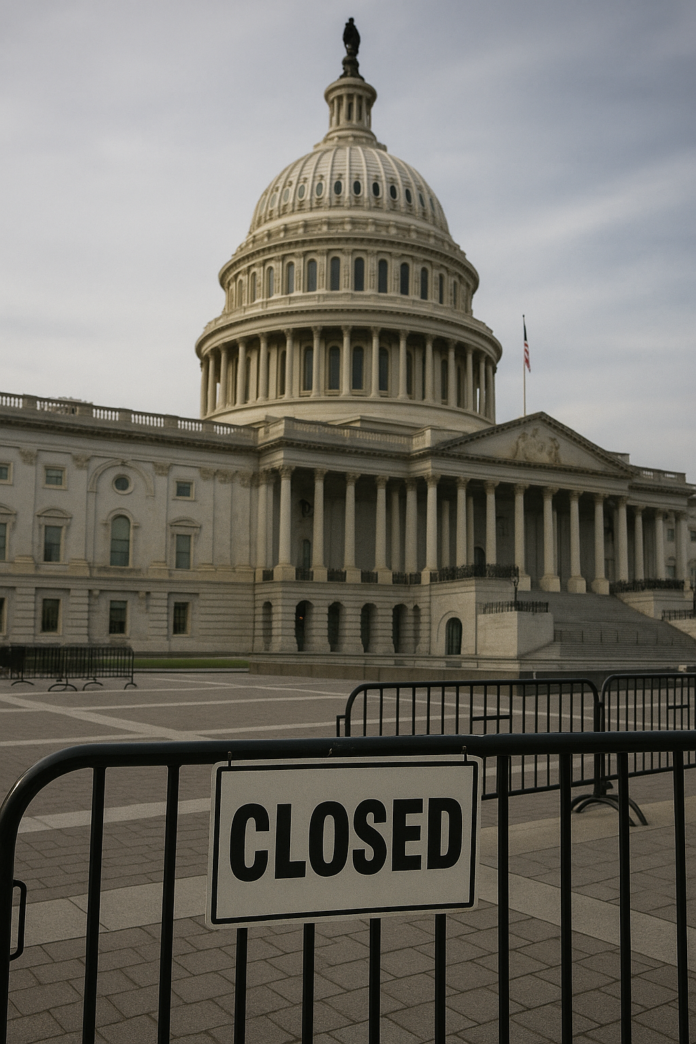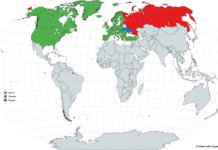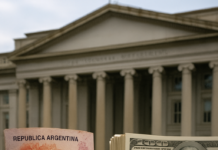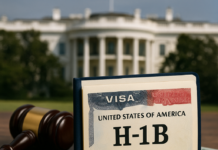
The United States entered a government shutdown at 12:01 a.m. on Wednesday after Congress and the White House failed to strike a funding deal. The impasse reflects not only policy disagreements but also the deepening divisions between the two major parties over health care, federal spending, and the role of government.
Republicans, who control both chambers of Congress, pushed forward a short-term spending bill already approved in the House. Their proposal would keep the government funded for seven weeks without additional provisions. Democrats, however, refused to support the measure unless it included concessions, particularly regarding health care subsidies and protections under the Affordable Care Act.
A White House meeting earlier in the week between President Donald Trump and congressional leaders failed to produce progress, setting the stage for the shutdown. This marks the first closure of government since Trump’s initial term, when a funding standoff in late 2018 and early 2019 lasted more than a month.
Federal employees are among the most directly affected. Approximately 750,000 workers are expected to be furloughed daily, while others in essential roles—such as air traffic controllers, law enforcement officers, and military personnel—will remain on duty without pay. Federal law guarantees back pay once the government reopens, but in the short term, missed paychecks will disrupt households nationwide.
National parks and museums are again at risk of partial or full closures. Some facilities will block access entirely, while others may remain open without full staffing, raising concerns over maintenance and safety. During the previous shutdown, uncollected trash and damaged facilities sparked public backlash.
Programs such as Social Security and Medicare continue unaffected because they are classified as mandatory spending. However, services tied to new applications or administrative functions could face delays. Food assistance through the Supplemental Nutrition Program for Women, Infants, and Children (WIC) is particularly vulnerable if the closure extends, while the Supplemental Nutrition Assistance Program (SNAP) has a longer runway but could eventually be strained.
Travelers may feel ripple effects. TSA agents and air traffic controllers are deemed essential, but prolonged shutdowns in the past have led to increased sick calls and longer wait times. Passport processing could also slow down, especially as backlogs build.
Both parties are positioning for advantage in the court of public opinion. Democrats argue that Republicans are forcing cuts to health care and other social programs. Republicans counter that Democrats are holding government funding “hostage” to win policy concessions.
President Trump and his advisers appear confident the opposition will bear most of the blame. At the same time, Democrats are under pressure from their base, with polling showing many Democratic voters supporting a harder line, even if it leads to a prolonged shutdown.
Meanwhile, Trump has floated the idea of mass layoffs within the federal workforce, raising additional anxiety. Budget director Russell Vought instructed agencies to identify areas where jobs could be eliminated rather than temporarily paused, a departure from how most shutdowns have been managed.
How long the closure will last is unclear. Some Republicans have expressed openness to limited compromises on health care, suggesting potential room for negotiation. Yet both sides remain far apart, and with partisan tensions running high, neither wants to appear weak to its political base.
For now, federal workers, travelers, and communities reliant on government services are caught in the middle of a standoff that shows no immediate path to resolution.
This image is the property of The New Dispatch LLC and is not licenseable for external use without explicit written permission.









